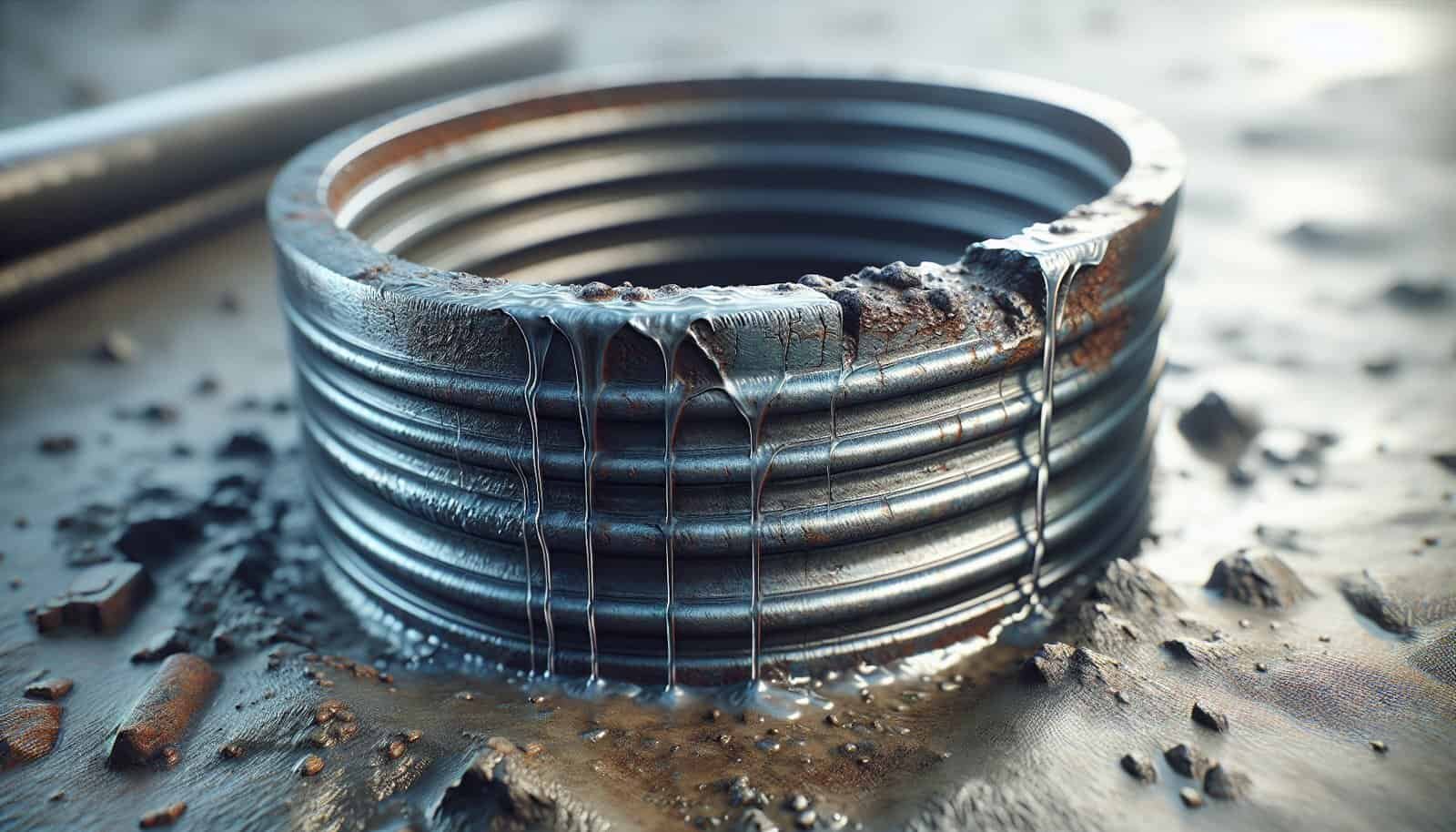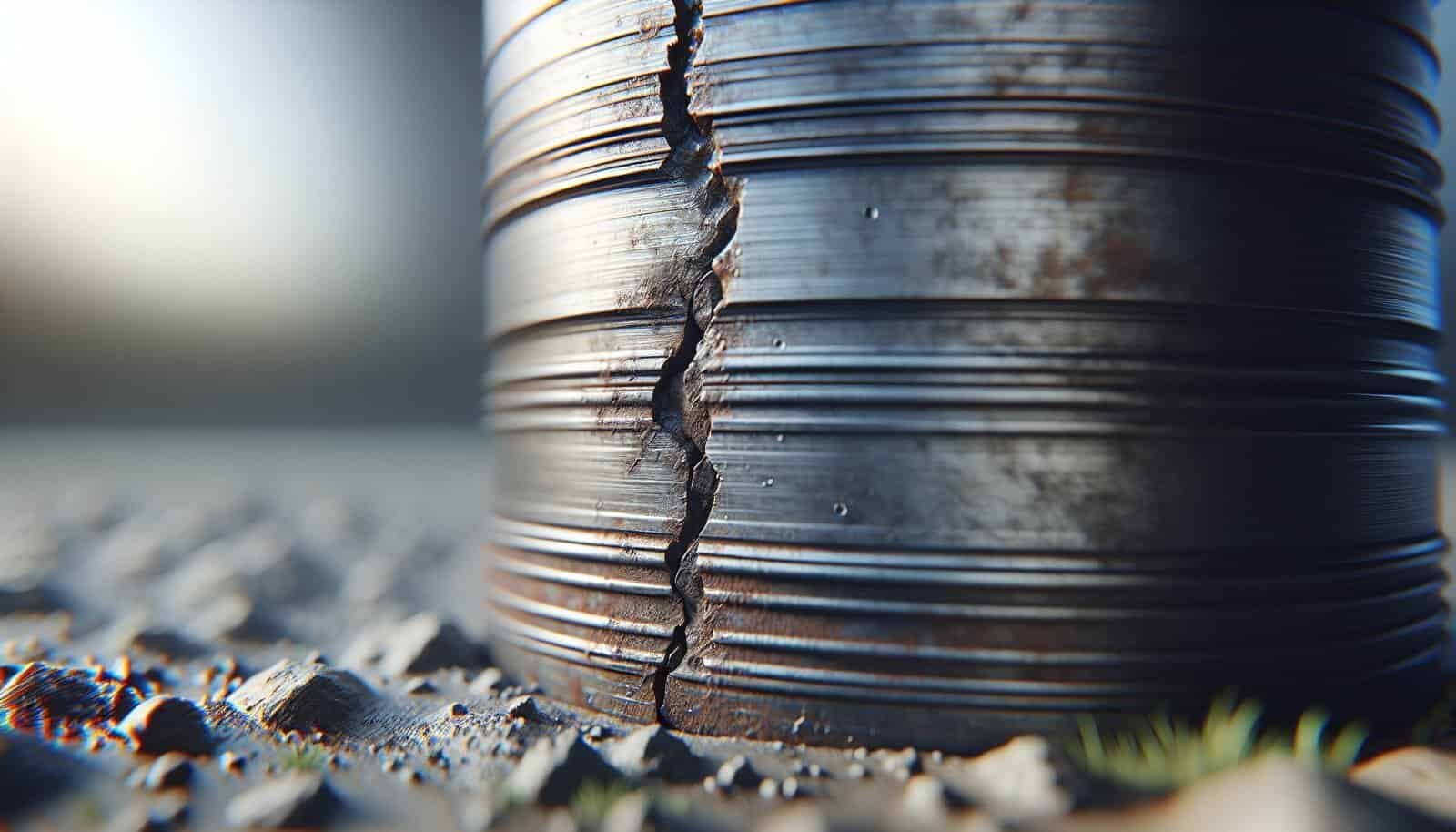?Could your well casing be cracked or compromised — and how would you know?

How Do I Know If My Well Casing Is Cracked?
You rely on your well to provide safe water, and the casing is one of the most important parts protecting that water. A cracked or damaged casing can allow surface contaminants to travel down into the aquifer, so recognizing signs early helps you protect your household water supply.
What the well casing does and why it matters
The casing is the pipe that lines the drilled hole and keeps surrounding soil and surface water from entering the well. It forms a barrier between contaminants at the surface (or in near-surface soils) and the groundwater that supplies your pump. When the casing is compromised, pathways open for bacteria, nitrates, pesticides, and other contaminants.
Typical materials and how they age
Well casings are commonly made of steel, PVC (plastic), or concrete. Each material has a different lifespan and failure mode:
- Steel can corrode and rust, leading to holes or structural failure.
- PVC can crack from UV exposure before installation, physical damage, or from brittle aging in cold climates.
- Concrete can crack or spall, especially in certain soils.
Knowing what your casing is made from helps you interpret signs of damage and decide on appropriate repairs.
Common signs that your well casing might be cracked
When your casing is damaged you may see changes in water quality, performance, or physical evidence around the well. Not every symptom proves a cracked casing, but these clues justify further investigation.
Changes in water clarity, color, or smell
If your water becomes cloudy, has particles or sand, shows brown or rusty colors, or develops unusual odors (sulfur/rotten egg, petroleum-like, musty), a breach could be letting sediments and contaminants in. You should test water chemistry and microbiology to confirm.
Sudden or gradual drops in water pressure or flow
If you notice reduced flow from faucets, toilets not filling properly, or the pump running more often, it may indicate a structural issue in the well, potentially including casing damage or collapse. Rule out pump or plumbing problems first.
Presence of sand, sediment, or rust in faucets
Finding grit or rust particles suggests material is entering the water column. Sand can come from a deteriorating screen or from casing gaps allowing formation material to enter. Rust indicates corroding steel components.
Biological indicators: positive bacteria tests
If routine testing shows total coliform or E. coli, the well is likely exposed to surface or near-surface contamination. A cracked casing is a common route for bacteria to enter the well. Re-test and pursue inspection if results are positive.
Changes after heavy rain, flooding, or nearby disturbances
If water quality worsens (cloudiness, bacteria present) after storms, construction, or heavy equipment near the wellhead, contaminated surface water may be getting into the well through a compromised casing or poor surface seal.
Visible damage above ground
Look for physical signs at the wellhead: cracked or loose well caps, missing bolts, gaps between casing and concrete slab, or signs of settling around the wellpad. These suggest that surface water may find its way downward.
Unusual groundwater chemistry
Elevated nitrates, pesticides, solvents, or fecal indicator chemicals imply contamination from surface activities. These results should prompt a professional inspection to check for casing breaches or inadequate seals.
How to inspect the well and casing safely
You can do basic checks yourself, but some inspections need professionals. Safety is essential: wells can be dangerous if you fall in, inhale gases, or mishandle equipment.
What you can safely inspect
You can check the area and external components:
- Walk around and look for erosion, pooling water, animal activity, or cracks in concrete well pads.
- Inspect the well cap: ensure it’s intact, bolted, and provides a sanitary seal (no holes or rust).
- Look for signs of contamination sources nearby: septic systems, fuel tanks, chemical storage, animal pens, or agricultural fields.
Always avoid removing the cap or lowering anything into the well unless you’re trained.
What you should leave to a professional
Do not open casing or remove the cap unless you’re a licensed well professional. Experts can:
- Perform downhole camera (video) inspections safely.
- Do pressure and sealing tests.
- Conduct specialized logging (electrical, acoustic) for structural integrity.
- Repair or replace casing using proper tools and permits.
If you suspect a crack, call a licensed well driller or pump contractor.
Tests and tools professionals use to detect casing cracks
Professionals use a combination of visual, mechanical, and chemical tests to diagnose casing issues. These tests give definitive information about the presence, location, and severity of a crack.
Downhole camera/video inspection
A waterproof camera lowered into the borehole gives a direct visual of casing walls, joints, screens, and any damage. This is one of the most straightforward ways to identify cracks, holes, corrosion, and sediment entry.
Pressure and flow tests
Pressure tests can show leaks in the system. Flow rate and drawdown tests help identify whether the water column is being compromised by structural failure or well efficiency loss.
Dye tracing and surface water tests
Dye added to suspicious surface water can show if surface inputs enter the well. If dye appears in well discharge or household water, a surface pathway (often via a crack or seal failure) exists.
Geophysical logging (acoustic, conductivity)
Specialized logs can detect fractures and gap zones where water is entering. Acoustic or electrical logs can provide a profile of casing integrity and surrounding formation.
Bacterial and chemical sampling
Laboratory tests for total coliform, E. coli, nitrates, pesticides, and volatile organic compounds (VOCs) help establish whether contaminants consistent with surface sources are present.
Corrosion assessment and material testing
If your casing is steel, professionals can assess corrosion rates and remaining wall thickness. PVC inspections focus on cracks, splits, or brittle failure.

Immediate actions if you suspect a cracked casing
You don’t have to panic, but act promptly to protect your water and household health.
Stop using water for drinking and cooking until tested
If you suspect contamination (bacterial or chemical), use bottled water or an alternative safe source for drinking and food preparation until testing shows the water is safe.
Test the water quickly
Collect samples for at least total coliform and E. coli initially, and consider nitrates and other contaminants based on local land use (agriculture, industry). Use a state-certified lab for reliable results.
Contact local health or environmental authorities
Your local health department can advise on testing, disinfection, and immediate steps. They may also provide guidance about required follow-up if results are positive.
Avoid any activities that could worsen contamination
Don’t store chemicals, fuel, or waste near the wellhead. Avoid driving heavy equipment near the well that could damage the casing or drive contaminants into soil cracks.
Repair options for cracked well casings
Repair methods depend on casing material, depth, size of damage, well construction, and local regulations. A licensed contractor will recommend the best approach.
Sanitary sealing and pitless adapter repair
If the main problem is a missing or damaged cap or surface seal, replacing the cap and ensuring the annular seal is intact may be enough. A sanitary seal blocks surface water. Pitless adapters (where the discharge enters underground piping) should be checked for integrity.
Slip lining (internal pipe liner)
Slip lining involves inserting a smaller diameter pipe (usually PVC) into the existing casing to cover holes and restore integrity. This can be cost-effective when the existing casing is still stable.
Pull and replace the casing
If the casing is severely damaged or corroded, the contractor may remove it and install a new casing and screen. This is typically more expensive but restores full structural integrity.
Chemical or cement grouting
Grouts can be pumped into annular spaces or around the casing to seal leaks. Grouting is used to fix localized leaks or to improve the sanitary seal where annular spaces are a concern.
Well rehabilitation, development, or deepening
Sometimes the best long-term solution is improving the well’s structure—cleaning, re-developing, installing a new screen, or drilling deeper to a safer aquifer.
Complete well replacement
In cases of extensive damage, contamination, or when the well’s overall condition is poor, replacing the well may be the safest and most cost-effective option long term.

Cost considerations and typical timelines
Costs vary widely by location, well depth, and repair type. Below is a general table to help you understand typical orders of magnitude and timelines. Exact prices require quotes from local contractors.
| Repair Type | Typical Cost Range (USD) | Typical Timeline |
|---|---|---|
| Cap or sanitary seal replacement | $150–$600 | Same day to 1 day |
| Shock chlorination (disinfection) | $100–$400 (DIY) or $200–$600 (pro) | Same day |
| Slip lining | $1,500–$6,000+ | 1–3 days |
| Local grouting/annular seal repair | $500–$3,000 | 1–2 days |
| Pull and replace casing/screen | $5,000–$15,000+ | Several days to a week |
| New well drilling and construction | $5,000–$50,000+ | Several days to multiple weeks |
Keep in mind that permitting, site prep, and post-repair water testing add cost and time. Prices depend on depth, geology, and access.
Prevention and routine maintenance to reduce risk
Regular maintenance helps prevent casing failures and keeps your water safe. You don’t need to be an expert to do many of these tasks yourself.
Annual testing and inspections
Test for total coliform and nitrates at least annually. Consider more frequent testing if your risk is higher (flooding, agriculture, septic nearby). Do a visual check of the wellhead each season.
Maintain sanitary wellhead conditions
Keep the area around your well clean and graded so surface water runs away from the well. Keep chemicals, fuel, livestock, and waste at a safe distance (most codes recommend at least 50–100 feet, but check local rules).
Secure and inspect the well cap
Ensure the cap is intact, vented properly, and bolted. Replace damaged caps promptly.
Avoid heavy loads and excavation near the well
Do not park vehicles or store heavy items on the well pad. Avoid digging close to the well, and mark the location before any construction.
Keep records and schedule professional maintenance
Maintain documents of tests, repairs, and contractor work. Periodic professional inspections help catch problems before they become serious.

Private wells vs. municipal water: safety standards and responsibilities
You should understand the regulatory differences between private (domestic) wells and public/muncipal water systems because they determine who is responsible for testing and compliance.
Who enforces drinking water standards?
- Municipal water systems are regulated under the federal Safe Drinking Water Act (SDWA) and state agencies. Utilities must meet Maximum Contaminant Levels (MCLs) for many contaminants and provide annual Consumer Confidence Reports (CCRs).
- Private wells serving a single household are typically not regulated by the EPA under the SDWA. The well owner is responsible for testing and ensuring water safety. State or local health departments may have guidance or permitting for construction and repair, but routine water quality for private wells is your responsibility.
Key differences at a glance
| Topic | Private Well | Municipal/Public Water |
|---|---|---|
| Federal SDWA coverage | No | Yes |
| Required routine testing | No (owner responsibility) | Yes (utility conducts and reports testing) |
| Reporting to consumers | No (owner handles testing) | Yes (Consumer Confidence Report annually) |
| Enforcement of MCLs | Not typically enforced for private wells | Regulatory enforcement and penalties apply |
| Treatment responsibility | Owner pays and maintains | Utility provides and maintains; cost covered by rates |
| Funding/assistance availability | Often limited; local programs may help | Larger utilities may access state/federal funding |
What this means for you
Because your private well is not covered by federal routine enforcement, you must be proactive. Test regularly, maintain the well, and follow local codes for construction and repair. If the utility supplies your neighbor, their system will be monitored and regulated; your well is your personal responsibility.
Recommended water testing schedule for private wells
Below is a practical schedule to help you keep your well water monitored. Your local health department may have additional recommendations based on regional risks.
| Test | How often | When to test additionally |
|---|---|---|
| Total coliform & E. coli | Annually | After flooding, repairs, or unexplained health issues |
| Nitrate | Annually | If you have infants or are in agricultural area |
| pH, hardness | Every 2–5 years | If you see scaling or corrosion |
| VOCs (solvents) | Every 3–5 years if near industrial activity | If you smell petroleum or solvents |
| Lead & copper | Every 3–5 years | If plumbing changes or corrosion is suspected |
| Arsenic, radon, manganese | Once (baseline), repeat if elevated | If in known geologic risk area |
| Total dissolved solids / conductivity | As needed | If water taste/appearance changes |
Always use a state-certified laboratory for definitive results.

What to do if tests show contamination
Positive test results require action. The steps depend on the contaminant and severity.
Bacterial contamination (coliform/E. coli)
- Do not drink the water. Use bottled or boiled water for emergencies following guidelines from your health department.
- Shock chlorinate the well (temporary disinfection) and re-test after appropriate waiting periods.
- Identify and correct the contamination source (likely casing/seal failure, surface water intrusion, septic systems).
- If problems persist after disinfection, consult a professional for structural assessment.
Nitrate contamination
- High nitrates are especially dangerous for infants. Stop using water for infant formula and consult local health authorities.
- Find and fix the source (fertilizer, livestock waste, septic leaks, surface infiltration).
- Consider treatment (ion exchange, reverse osmosis) or alternative water sources.
Chemical contaminants (VOCs, pesticides, petroleum)
- Stop using the water for drinking and cooking. Some contaminants cannot be removed by simply boiling.
- Work with environmental professionals to identify the source and recommend treatment or well replacement.
- In many cases, treatment systems (activated carbon, reverse osmosis) or a new well may be required.
Persistent or severe contamination
If multiple contaminants are present or contamination is persistent, a new well in a safer location or deeper aquifer may be the best long-term solution.
Selecting a qualified well professional
Choosing the right contractor is important for correct diagnosis and repair.
Credentials and licensing
Hire a licensed well driller or pump contractor familiar with local geology and codes. Verify licensing, ask for references, and check online reviews.
Questions to ask
- Are you licensed and insured?
- Can you provide references and examples of similar work?
- What testing do you recommend and why?
- What are the repair or replacement options and costs?
- Will you pull permits if needed?
Get multiple quotes and written estimates
Get at least two written estimates that outline scope, materials, permits, testing, and warranty. Cheaper is not always better—quality matters for water safety.
Insurance, permits, and local regulations
Check local rules before repairs.
Permits
Many jurisdictions require permits for well repair, casing replacement, and new well drilling. Your contractor should handle permits or tell you what’s needed.
Insurance and warranties
Ask about contractor insurance and warranties on work and materials. Ensure you get written documentation and receipts for any work performed.
Financial assistance
Some local health departments or state programs offer grants or low-interest loans for well repair in vulnerable households. Ask your local health agency about assistance.
Frequently asked questions (FAQ)
Can you disinfect a well if the casing is cracked?
You can perform shock chlorination to eliminate bacteria as a temporary measure, but if the casing is cracked, contamination can re-enter the well. Disinfection is only a short-term fix; structural repair is usually required.
Is it safe to use water if a casing crack is suspected but tests are negative?
Negative tests are reassuring, but they’re only snapshots. If you suspect structural problems, schedule an inspection and continue routine testing, especially after weather events.
How often does a well casing fail?
Casing lifespans vary: steel may last decades but can corrode, while PVC can last longer under the right conditions. Failure timing depends on materials, installation quality, soil chemistry, and surrounding activities.
Can you line a cracked steel casing with PVC?
Yes, slip lining with PVC into an old steel casing is a common repair when the steel still retains structural integrity. A professional must evaluate whether slip lining is appropriate.
Who should I call first if I suspect a crack?
Call your local health department for guidance and a licensed well contractor for inspection. Testing labs can advise on sample collection.
Final checklist: What to do if you suspect a cracked well casing
- Stop using water for drinking if you suspect contamination.
- Collect water samples for total coliform/E. coli and relevant chemicals using a state-certified lab.
- Perform a visual inspection of the wellhead (without removing the cap).
- Contact your local health department for guidance.
- Call a licensed well driller/pump contractor for downhole inspection tools (camera, pressure test).
- Avoid storing hazardous materials near the well and keep the area graded away from the wellhead.
- Get written quotes, permits, and timelines before proceeding with repairs.
- After repair, disinfect and re-test the water to confirm safety.
Final thoughts
As a private well owner, you play the primary role in keeping your water safe. Recognizing signs of a cracked or compromised casing and acting promptly — testing, contacting authorities, and hiring qualified professionals — will protect your health and avoid costlier repairs. Regular maintenance, proper siting of potential contamination sources, and an annual testing routine help you stay ahead of problems and ensure your household continues to enjoy safe drinking water.
